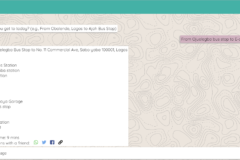Everyone wants to do everything on mobile these days, from banking with a simple USSD menu to consulting with their doctor via SMS. A lot of startups and businesses would like to implement a digital strategy that involves partnering with telephone companies (telcos) in Nigeria to connect with mobile users. It is no wonder that Nigerian telcos are constantly reeling out other products outside of the traditional Voice, SMS and Data. Telcos are fast becoming media outfits, that distribute content; banks, with mobile money and loan services; and a number of other such ventures.
There are many instances of partnerships with telcos, such as device partnerships with manufacturers, but this piece will be restricted to Mobile Value Added Services (VAS) since this is where a mobile service delivery strategy fits in for most startups and businesses. Ringback tones, mobile money services, Interactive Voice Response (IVR) services and SMS notifications or alerts are examples of VAS products that telcos partner with businesses to deliver. Several of the VAS products provided by telcos are delivered in partnership with other organisations. Most of these are meant to give mobile users a better and/or a digital experience of the partner’s products.
To the hows, some of the typical processes that lead to the launch of these services are:
NCC Approval
Where a service requires the use of unique shortcodes, the first thing the business or startup needs to do is to obtain NCC approval. This typically involves a licensed VAS company as such codes are usually issued to only companies with VAS licenses.
Other licenses and contracts
Where the service being proposed requires licenses from other regulatory bodies, for example, banking licenses, the company proposing such a service is required to obtain such a license. Also, relevant contracts are to be concluded and set down formally. One common case is with media distribution services such as Ringback tones, where a formal contract between the company seeking to partner and the owner of the song is usually required.
Proposal to Telco
With NCC approval, licences and contracts out of the way (where needed), the next thing is the actual proposal of the service to the telco(s). There are a number of approaches to this- one is to take a chance and walk in, call in, or email asking to be connected to someone in charge of what you are proposing, this may or may not yield results. Another approach is to use a licensed VAS provider who probably already knows the right telco personnel and know who to approach for what service. Another way is to look for someone on the inside to connect you to the right persons. The best approach to proposing a VAS partnership to telcos largely depends on the circumstance of the proposer and what the service entails.
Proposals generally lead to acceptance, rejection or amendments and VAS proposals are no different.
Integration
Here is where the technical guys come in. Depending on the proposed service, a partner might be granted access to an API, a web service or webhook. Some services require a direct connection to the telcos’ gateway with a protocol such as SMPP for SMS services. In other instances, all the partner needs is login access to a portal and an interface to manage the service.
At this point, the telco scrutinises the partner’s service/application. Quality tests and User Acceptance Testing (UAT) follow integration and precede launch.
Challenges of VAS partnerships for the partners
A conversation with the guys at HollaTags, a company that helps businesses facilitate connections with telcos, reveals some of the challenges they face in facilitating such partnerships.
According to Biyi, HollaTags’s Software Engineer and CTO, there is never a fixed timeline for implementing these services with telcos. Prospective partners go blindly into negotiations and keep hounding those in charge with phone calls and emails until such integrations are complete. This, he says, is a major challenge, considering that business projections have been made and working without definite timelines is bad for everyone involved.
Biyi also cites a lack of comprehensive information for technical integrations as a problem. When working to integrate new services, programmers usually stumble upon areas that require clarification and this usually leads to a lot of ‘back and forth’ as technicians at telcos are often reluctant to give detailed explanations.
Judah, the Account Manager who manages communications with telcos for the same company thinks the revenue share formula (for services involving revenue share) is almost always unfair to the partners. According to him, the telcos take the lion’s share and leave ‘nothing’ to the partner who has costs to cover too.
The telco angle
Adia Sowho’s article gives tips and provides valuable insight for startups interested in partnering with telcos. On the matter of integrations between partners and telcos that take forever and affect business projections, the piece attributes this problem to the “many layers of proprietary technology that are not shared even amongst telcos in the same markets.” Adia’s advice is for partners to “first determine whether the target market you can identify within one telco is enough to meet your numbers, if it is, start with one partner.”
Adia, who once headed digital business in one of Nigeria’s telcos, also explains why telcos take the larger share of revenue from services. According to her, telcos take a lot of risks when deploying services with startups. There is the uncertainty of market demand and the chances of unsuccessful deployment to consider and this results in telcos’ policy of mitigating these risks with ‘oppressive’ revenue share formulae. There is also the heavy forex expense for equipment, installation, and support. How to deal with this – “If the split is not in your favor, don’t panic! It is okay to push for a volume based adjustment — so the more successful your product is, the greater your share.”
It is great to maximize your startup’s potential by partnering with telcos to reach users on mobile. Creating a USSD application for your insurtech product is awesome. Allowing users to pay for your content from their phone balance is a great idea. However, it certainly requires a lot of consideration, planning and patience for any business looking to reap the sweet rewards of these partnerships.




















